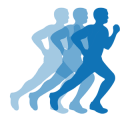Osgood Schlatter Disease, causing knee pain in young athletes aged 10-15, can be effectively managed with the right treatment and training adjustments.
Medically reviewed by Dr Chaminda Goonetilleke, 21st Dec. 2021
Osgood Schlatter disease symptoms
Osgood Schlatter disease, common among children aged 10-15, is a significant cause of knee pain.
Symptoms include:
- Localized knee pain on the front of the shin bone, just below the knee (tibial tuberosity)
- Worsening pain with exercise, specifically weight-bearing activities like running, football, or jumping sports
- Pain upon contracting the quadriceps with a straight leg
- Discomfort during squatting, especially during single-leg squats
Assessment & diagnosis
Osgood Schlatter disease, typically identifiable by the age of the patient and symptom location, is easily diagnosable.
Key indicators include:
- Swelling or inflammation of the tibial tuberosity, potentially forming a lump over time.
- Atrophy or wasting away of the quadriceps muscles in prolonged cases.
- In severe instances, an X-ray may be conducted to assess the extent of damage.
The severity of symptoms can fluctuate without a discernable cause, making the disease appear episodic.
“Maintain a training diary to track your activity and symptoms. It’s an effective tool for identifying training practices that may exacerbate your injury.”
What is Osgood Schlatter disease?
Osgood Schlatter Disease, named after Drs. Robert Osgood and Carl Schlatter in 1903, is a painful condition occurring where the patella tendon attaches to the tibia, typically in children whose bones are not fully matured.
The patella tendon, also known as the patella ligament, connects the kneecap to the shin bone at a protrusion called the tibial tuberosity. As the disease progresses, the tendon tugs at the tibia’s growth plate, inducing repeated trauma. The healing process involves new bone growth, leading to a noticeable lump at the tibial tuberosity.
What causes Osgood Schlatter disease?
Osgood Schlatter syndrome is an overuse injury influenced by several factors:
Age: More common in boys aged 13-15, it can affect girls, typically between 10-12 years. It associates with periods of rapid growth and intense sports activities. It can occur in adults but is rare and usually linked to untreated adolescent cases.
Growth Spurts: As an athlete’s bones grow quickly, muscles and tendons may lag, increasing strain. This strain is common in younger athletes whose bones are not fully matured.
Activity Levels: Higher risk is seen in children engaged in weight-bearing, running, jumping, and football sports. Effective management of training loads and symptoms is crucial.
Foot Biomechanics: Overpronation, excessive inward rolling of the foot, can cause leg rotation, subsequently increasing forces through the patella tendon.
Treating Osgood Schlatter disease
Treatment for Osgood Schlatter disease aims to alleviate pain and inflammation, coupled with effective training management. Essential for both the young athlete and parents, education plays a significant role. Symptoms generally improve once the tibia fully matures around 18 years. Adherence to the PRICE principles—Protection, Rest, Ice, Compression, and Elevation—is key.
Cold Therapy
Regularly apply ice or a cold therapy wrap to the knee. For intense pain, use ice every hour for 10 minutes. Decrease frequency as symptoms improve, and consider post-training ice applications. Avoid ice burns by moving the ice during use.
Rest
Prioritize rest and limit exercise to pain-free activities. Reduce frequency and impact of sessions, considering low-impact exercises like swimming or cycling. A plaster cast may be needed for severe pain.
Patella Tendon Strap
A patella knee strap can help protect the knee by adjusting force distribution through tendon compression. Wear it continuously during pain or only during exercise as you reintroduce training. A neoprene knee support can also be beneficial.
Compression
Experiment with different types of support to reduce swelling and provide comfort. Elastic supports or wraps could be helpful.
Osgood Schlatter Disease Taping
Taping can relieve symptoms by changing force distribution on the injured tendon, reducing strain on the painful area.
Medication
Doctor-prescribed NSAIDs: Doctors may prescribe anti-inflammatory medications like Ibuprofen to alleviate pain and inflammation. However, long-term reliance can mask actual knee conditions. Athletes with conditions like asthma should consult their doctor before taking such medication.
Thigh massage
Sports Massage/Myofascial Techniques: These methods can strengthen the quadriceps muscles to handle applied loads and prevent excessive tightness. However, avoid direct massage on the tibial tuberosity where the patella tendon inserts, as it may exacerbate symptoms.
Surgery
Rare Surgical Requirement: In rare cases, adults unresponsive to conservative treatments may require surgery.
Osgood Schlatter Exercises & Rehabilitation
Initiating Stretching Exercises: As pain-free daily activities resume, gentle stretching, especially of the quadriceps muscles, can be beneficial. If rapid growth has outpaced muscle development, these exercises can help alleviate strain on the tendon insertion into the bone.
“Avoid stretching if it induces pain. Excessive, unnecessary stretching could potentially worsen the condition.”
